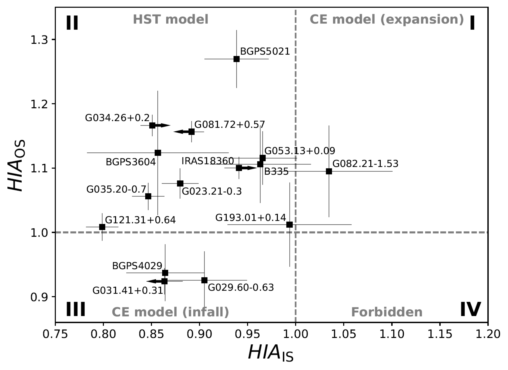

A New Probe for Tracing Infall Motion—NH3 (1,1) Hyperfine Intensity Anomalies
Prof. WU Gang from the Xinjiang Astronomical Observatory of the Chinese Academy of Sciences, along with researchers from the Max Planck Institute for Radio Astronomy in Germany, revealed the potential value of NH3 (1,1) hyperfine intensity anomalies (HIA) as a tracer for infall motion in star-forming regions, based on deep observations and analyses. The results were published in Astronomy & Astrophysics.
Identifying infall motions is crucial for our understanding of accretion processes in regions of star formation. In this paper, the researchers studied the HIA toward 15 infall candidate regions in order to assess its reliability as an infall tracer. Using deep observations of the NH3 (1,1) transition with the Effelsberg 100m telescope, they identified HIAs toward all 15 targets. Fourteen of the sources exhibited anomalous intensities in either the inner or outer satellite lines of cold gas.
These findings not only confirm the feasibility of using HIA as a tracer for infall motion but also provide important clues for further research into the star formation process. Additionally, the results suggest that HIA could serve as a probe for infall during the very early stages of star formation, such as the infrared dark cloud phase, offering a new approach to studying early infall motion in star formation.

Figure 1, Distribution of the hyperfine intensity anomalies of the inner (HIAIS) and outer (HIAOS) satellite lines.
Attachment Download: